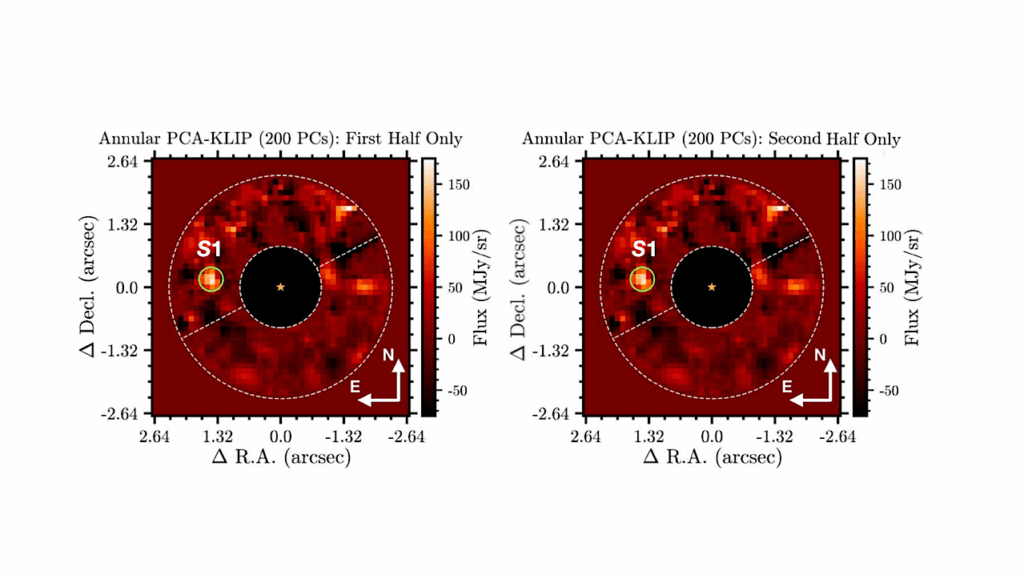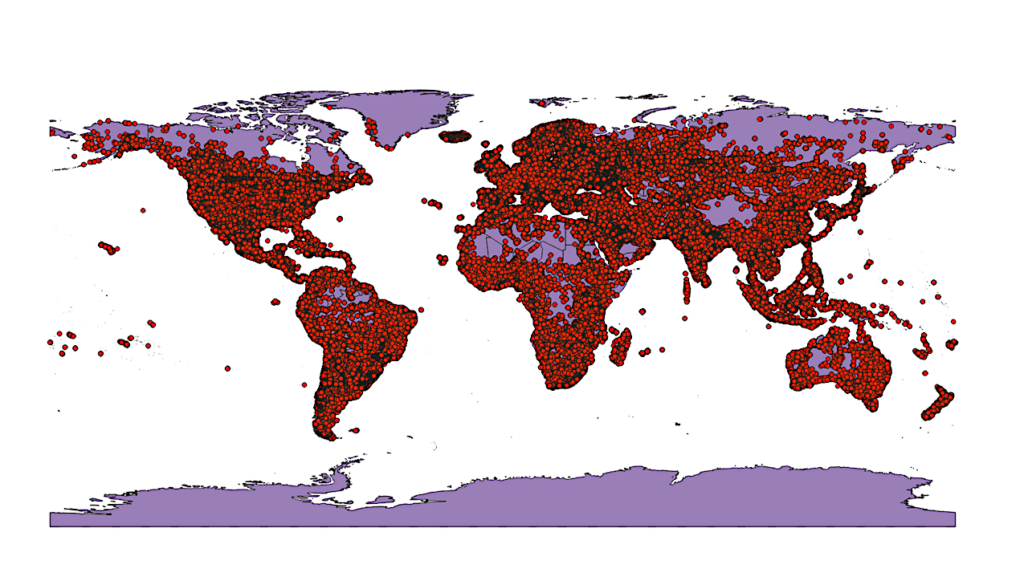Searching for Planets Orbiting Alpha Centauri A with the James Webb Space Telescope

Alpha Centauri A is the closest solar-type star to the Sun and offers an excellent opportunity to detect the thermal emission of a mature planet heated by its host star.
The MIRI coronagraph on JWST can search the 1-3 AU (1″-2″) region around alpha Cen A which is predicted to be stable within the alpha Cen AB system. We demonstrate that with reasonable performance of the telescope and instrument, a 20 hr program combining on-target and reference star observations at 15.5 um could detect thermal emission from planets as small as ~5 RE. Multiple visits every 3-6 months would increase the geometrical completeness, provide astrometric confirmation of detected sources, and push the radius limit down to ~3 RE. An exozodiacal cloud only a few times brighter than our own should also be detectable, although a sufficiently bright cloud might obscure any planet present in the system.
While current precision radial velocity (PRV) observations set a limit of 50-100 ME at 1-3 AU for planets orbiting alpha Cen A, there is a broad range of exoplanet radii up to 10 RE consistent with these mass limits. A carefully planned observing sequence along with state-of-the-art post-processing analysis could reject the light from alpha Cen A at the level of ~10^-5 at 1″-2″ and minimize the influence of alpha Cen B located 7-8″ away in the 2022-2023 timeframe. These space-based observations would complement on-going imaging experiments at shorter wavelengths as well as PRV and astrometric experiments to detect planets dynamically.
Planetary demographics suggest that the likelihood of directly imaging a planet whose mass and orbit are consistent with present PRV limits is small, ~5%, and possibly lower if the presence of a binary companion further reduces occurrence rates. However, at a distance of just 1.34 pc, alpha Cen A is our closest sibling star and certainly merits close scrutiny.
Charles Beichman, Marie Ygouf, Jorge Llop Sayson, Dimitri Mawet, Yuk Yung, Elodie Choquet, Pierre Kervella, Anthony Boccaletti, Ruslan Belikov, Jack J. Lissauer, Billy Quarles, Pierre-Olivier Lagage, Daniel Dicken, Renyu Hu, Bertrand Mennesson, Mike Ressler, Eugene Serabyn, John Krist, Eduardo Bendek, Jarron Leisenring, Laurent Pueyo
(Submitted on 22 Oct 2019)
Comments: PASP in press
Subjects: Instrumentation and Methods for Astrophysics (astro-ph.IM); Earth and Planetary Astrophysics (astro-ph.EP)
Cite as: arXiv:1910.09709 [astro-ph.IM] (or arXiv:1910.09709v1 [astro-ph.IM] for this version)
Submission history
From: Chas Beichman
[v1] Tue, 22 Oct 2019 00:34:56 UTC (3,886 KB)
https://arxiv.org/abs/1910.09709
Astrobiology







